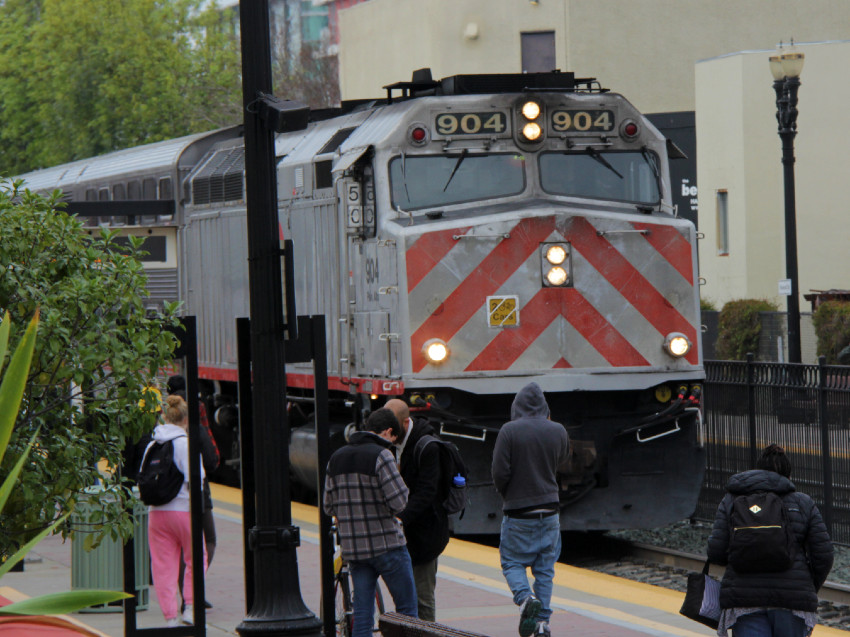Caltrain saw as much as a 95 percent drop in ridership due to the COVID-19 pandemic shelter-in-place orders, but a series of surveys reveal riders plan on returning to use the system post-pandemic, the transit agency said Tuesday.
One of Caltrain’s surveys, the COVID-19 Rider Survey, aimed to clarify how the pandemic would impact its future ridership patterns. Survey findings indicated that 55 percent of riders plan on riding the same or more post-pandemic, while a third of riders expect to ride less. Only 1 percent of riders anticipate not returning to the system, per the rail service. Riders earning less than $50,000 annually are those most likely to continue their ridership, according to the results.
Polling done to get riders’ views on a potential Caltrain revenue measure showed that 43 percent of those surveyed, 68 percent of sporadic riders and 71 percent of regular riders planned on riding the same amount or more than they previously had.
Caltrain’s 2019 Triennial Customer Survey, which happens every three years, showed the amount of riders with access to cars has dropped from 60 to 51 percent. Growth was seen in the number of riders using its services due to traffic (up from 62 percent in 2016 to 72 percent) and to protect the environment (up from 26 percent to 43 percent). In 2019, Caltrain marked a milestone in that it was the first year people of color constituted the majority of its ridership, an increase from 47 percent in 2016 to 52 percent. The 2019 survey also underscored Caltrain’s diverse ridership, with 41 percent of riders being born in 107 countries other than the U.S.
Additional insight can be found in a survey of Go Pass companies, which illuminated that 92 percent of employees at companies taking part in the Caltrain Go Pass Program are currently telecommuting, compared to 13 percent before the pandemic.
In its Market Segmentation Study, Caltrain learned that riders and non-riders from all three of its service counties see it more favorably than BART, Clipper, VTA and Muni, as well as other companies like Uber and Lyft. The Caltrain board is currently considering top recommendations from non-riders on how to increase its ridership: lowering the price of riding and improving connectivity.
Before the pandemic, Caltrain served about 65,000 riders per weekday. The COVID impacts on ridership has put Caltrain, which relies heavily on ticket sales and has no dedicated source of funding, on the brink of financial ruin, according to transit agency officials and advocates. Transit advocates are hoping to place an 1/8 cent sales tax to rescue and support the agency on the Nov. 3 ballot. However, the three counties where Caltrain operates, San Francisco, San Mateo and Santa Clara, have not reached agreement on details of the proposal.






